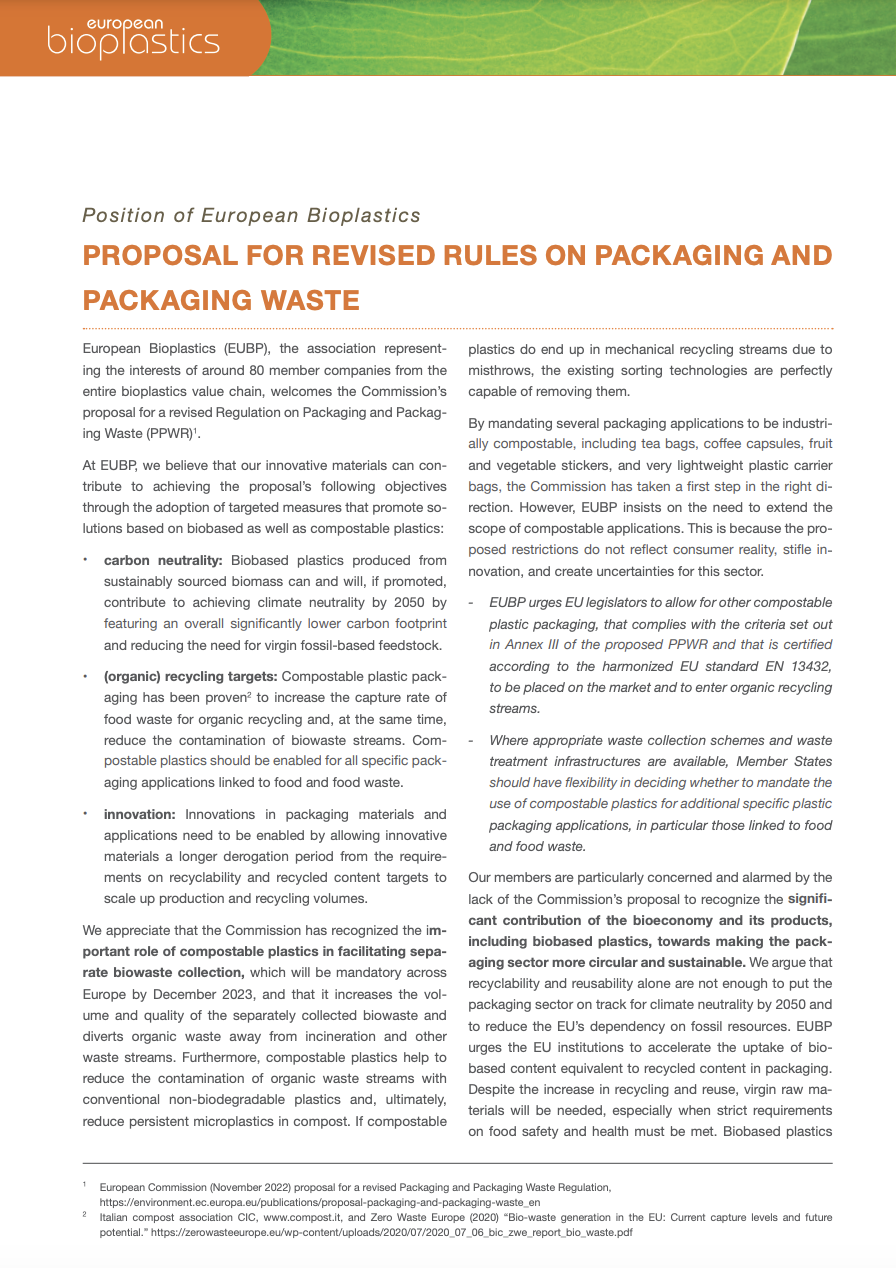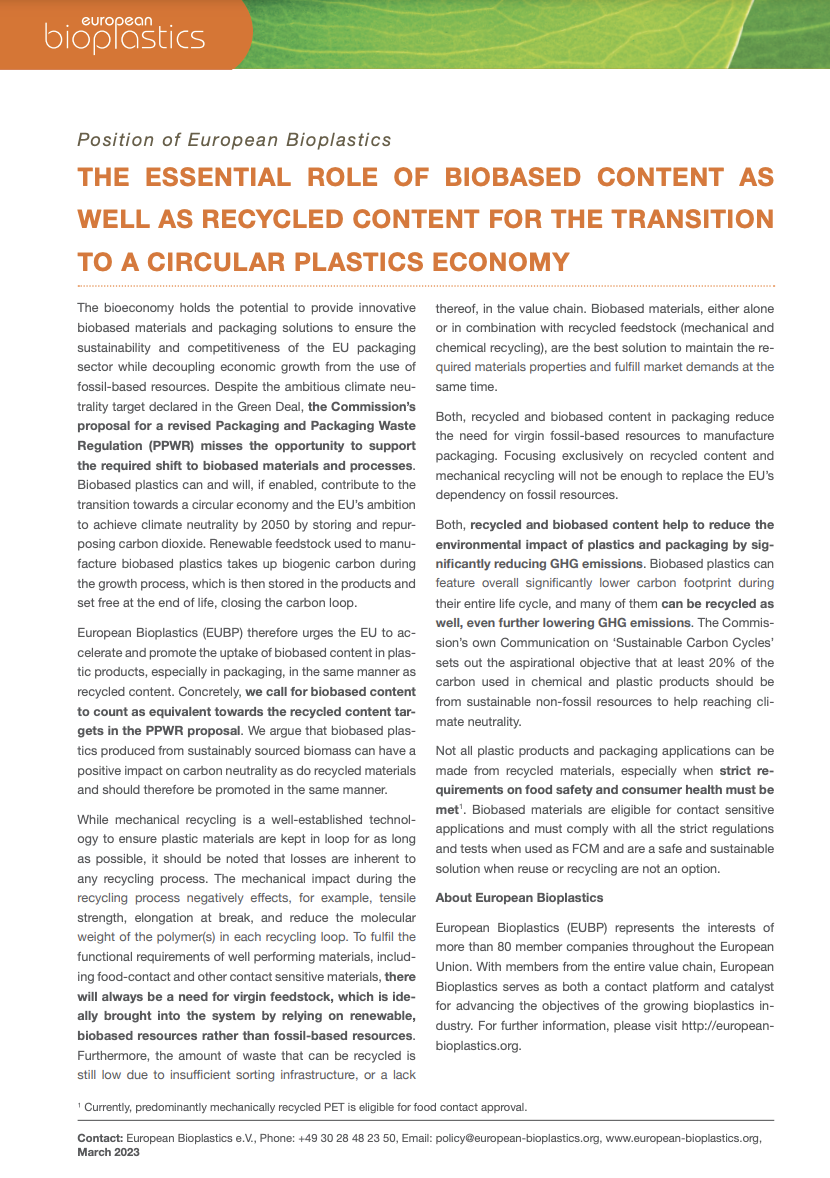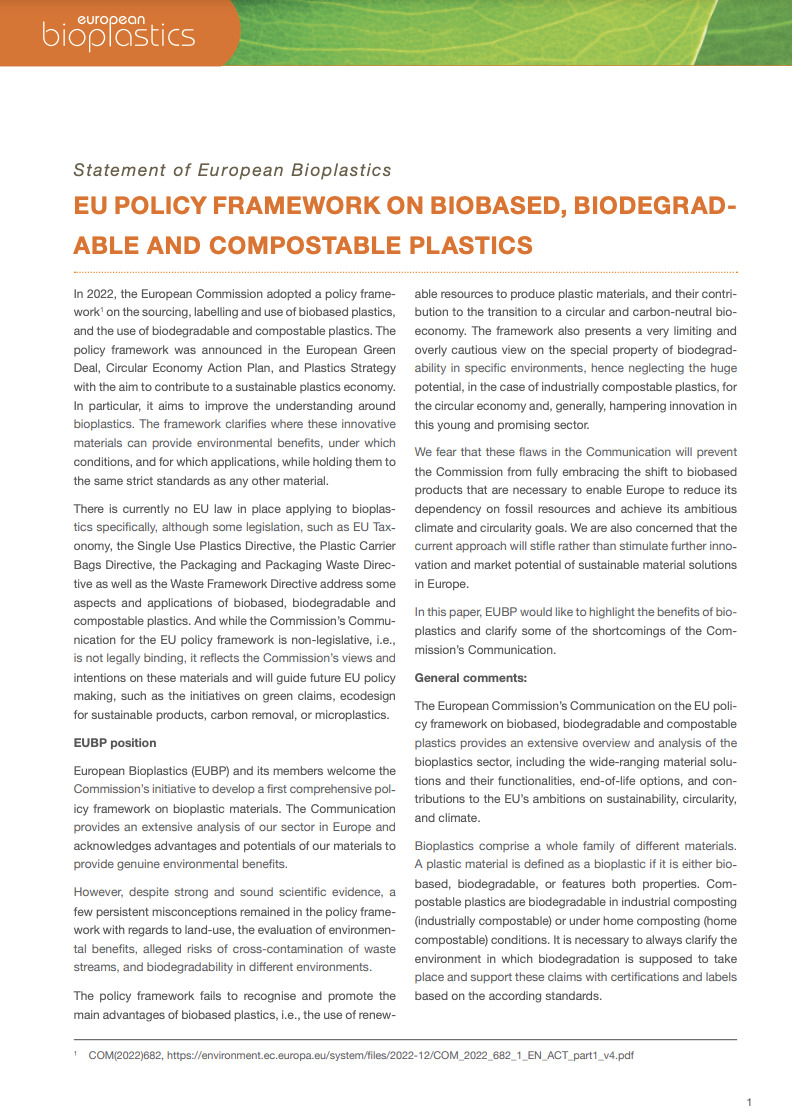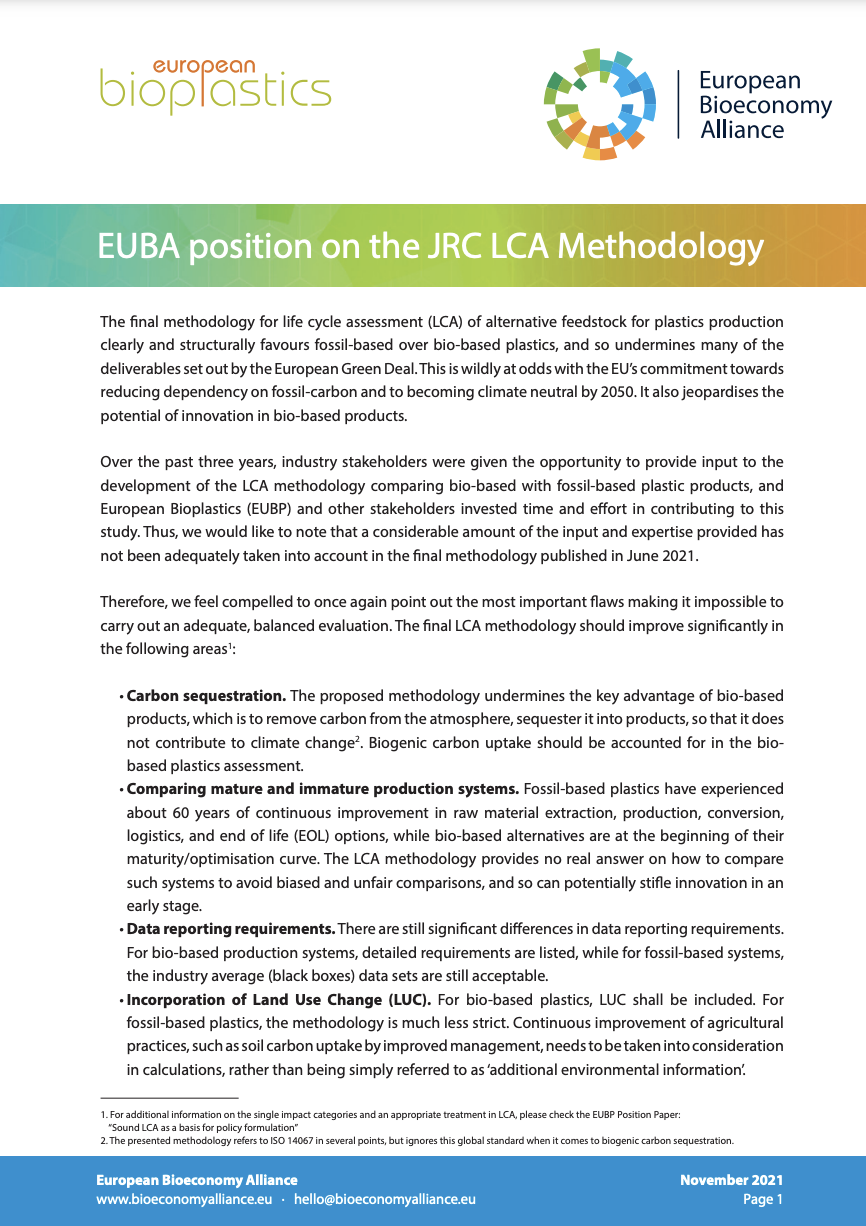Proposal for revised rules on packaging and packaging waste
Open the document European Bioplastics (EUBP), the association representing the interests of around 80 member companies from the entire bioplastics value chain, welcomes the Commission’s proposal for a revised Regulation on Packaging and Packaging Waste (PPWR). At EUBP, we believe that our innovative materials can contribute to achieving the proposal’s objectives through the [...]









